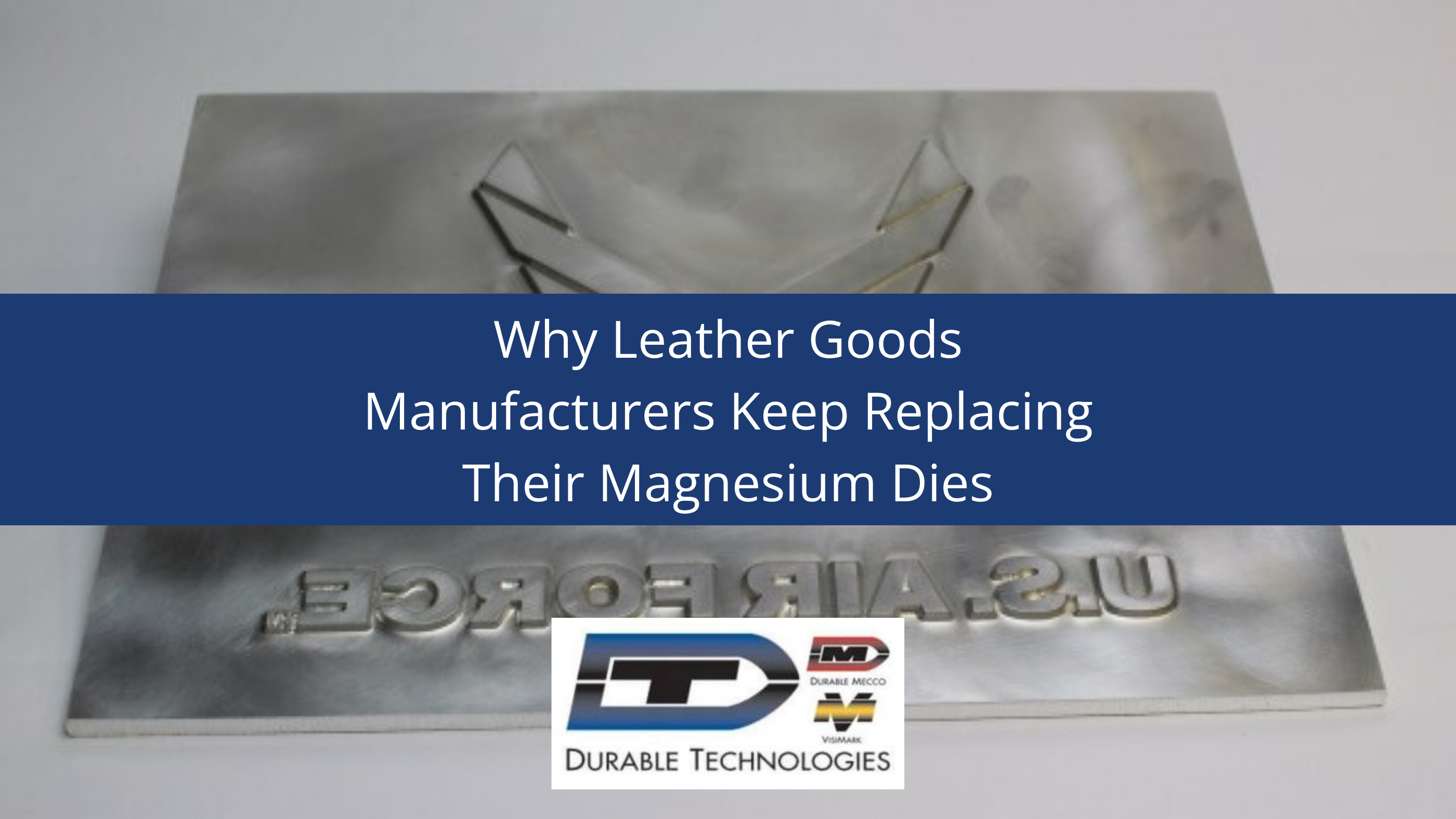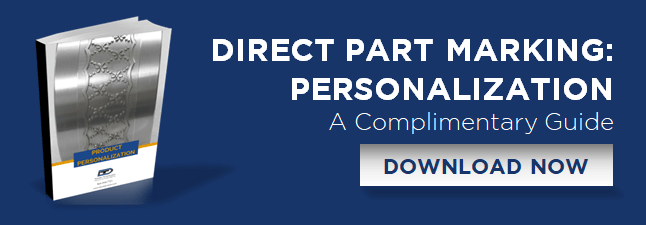3 min read
Why Leather Goods Manufacturers Keep Replacing Their Magnesium Dies
Matt Martin
Wed, Oct 22, 2025 @ 07:10 AM

A leather goods manufacturer came to us last year ordering magnesium dies. They needed custom hot stamping dies for their wallet line, and like many companies watching their tooling budget, they chose magnesium for the lower upfront cost.
Six months later, they were placing their fourth reorder.
The magnesium dies just didn't last. Impressions were losing clarity after a couple thousand stamps (if they're lucky). The crisp detail their customers expected was degrading faster than their production schedule could accommodate. They were stuck in a cycle of ordering, wearing out, and reordering the same dies.
Their cost per die was low. Unfortunately, their total cost of ownership was not.
The Hidden Cost of Cheap Dies
Magnesium dies serve a purpose. They're lightweight, inexpensive, and work well for short runs or prototyping. If you're testing a new design or producing a limited edition run, magnesium can make sense.
But for regular production volume, the math changes quickly.
Magnesium is softer than brass. Under the heat and pressure of repeated hot stamping, the engraved detail begins to wear. The edges round off. The impression loses its depth. After a couple thousand impressions, you're looking at ordering replacements.
With brass, that same die is just getting warmed up.
The real cost isn't the die itself. It's the production time lost waiting for replacements to be made. It's the inconsistency in your finished product as the dies degrade. It's the administrative overhead of placing frequent reorders and managing an inventory of backup dies.
What Changes When You Switch to Brass
Brass dies can last anywhere from two to five times longer than magnesium in typical leather stamping applications. That's thousands of additional impressions before you need a replacement.
The difference shows up in your finished product first. Brass holds fine detail better under repeated stamping. The impressions stay crisp and consistent from the first stamp to the thousandth. If you're hot stamping logos, monograms, or detailed branding onto leather goods, that consistency and detail makes all the difference.
Brass also tolerates the temperature cycling of hot stamping better than magnesium. The die face maintains its shape and edge definition. You're not fighting tool wear as a variable in your quality control process.
For manufacturers running regular production volumes, brass eliminates the stop-and-start rhythm of constantly replacing worn dies. You order once, you stamp for months, you don't think about it again until the die genuinely reaches end of life.
A Recent Account Shows the Real Numbers
We work with a leather goods manufacturer who had been ordering magnesium dies every few weeks. They produce high-end wallets and accessories with custom stamping for their brand and select retail partners.
The magnesium dies were affordable on paper. But they were burning through them faster than their production schedule anticipated. More importantly, the quality of their stamped impressions was slipping as the dies wore. Lead times for replacements meant they sometimes had to pause runs or use partially worn dies to meet deadlines.
We converted them to brass at a price point that was close to what they'd been paying for magnesium. Not identical, but close enough that the per-die cost wasn't a barrier.
Now, their brass dies last through their production cycles without quality degradation. Their stamping impressions have the quality on the first piece as the thousandth piece.
On the surface, you might think they're spending more for their brass stamps. They're actually spending less because they're buying fewer dies and losing less production time due to worn tools.
When Magnesium Makes Sense (And When It Doesn't)
Magnesium dies still have their place. Short production runs, one-off custom orders, or prototyping new designs before committing to brass tooling are all effective uses for magnesium.
If you're stamping between a few hundred and a thousand pieces and don't plan to repeat the job, magnesium keeps your tooling cost down without having to really worry too much about durability.
But if you're running regular production (1,000 pieces or more, for example), if the same design appears across multiple orders, if you need consistent quality from start to finish of a production run, magnesium becomes expensive quickly.
The break-even point arrives sooner than most manufacturers expect. Two or three magnesium die replacements usually cost more than one brass die that will outlast all of them combined.
Making the Switch Without Breaking Your Budget
The conversation usually starts with price. Brass costs more than magnesium per die. That's real, and we don't pretend otherwise.
But tooling should be evaluated on cost per impression, not cost per die.
When we work with customers on this transition, we look at their actual usage. How many impressions do they typically get from a magnesium die before quality drops? How often are they reordering? What's their production volume over a quarter or a year? How critical is the quality of the stamped impression?
In most cases, brass pays for itself within the first few production cycles simply by eliminating replacement orders.
We can also collaborate with customers on pricing, which makes the transition from magnesium to brass more manageable. The goal isn't to extract maximum margin on every die. The goal is to deliver better value, so customers keep coming back because the solution works for their business.
For manufacturers who have been caught in the magnesium replacement cycle, switching to brass isn't just an upgrade. It's fixing a problem they didn't realize they had until the production calendar kept getting interrupted by worn-out tooling.
Contact us to talk to our experts about making your mark!




